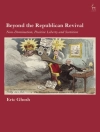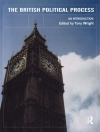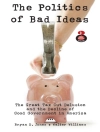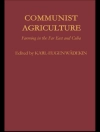For centuries, dictators ruled Russia. Tsars and Communist Party chiefs were in charge for so long some analysts claimed Russians had a cultural predisposition for authoritarian leaders. Yet, as a result of reforms initiated by Mikhail Gorbachev, new political institutions have emerged that now require election of political leaders and rule by constitutional procedures. Michael Mc Faul—described by the New York Times as ‘one of the leading Russia experts in the United States’—traces Russia’s tumultuous political history from Gorbachev’s rise to power in 1985 through the 1999 resignation of Boris Yeltsin in favor of Vladimir Putin.Mc Faul divides his account of the post-Soviet country into three periods: the Gorbachev era (1985-1991), the First Russian Republic (1991–1993), and the Second Russian Republic (1993–present). The first two were, he believes, failures—failed institutional emergence or failed transitions to democracy. By contrast, new democratic institutions did emerge in the third era, though not the institutions of a liberal democracy. Mc Faul contends that any explanation for Russia’s successes in shifting to democracy must also account for its failures. The Russian/Soviet case, he says, reveals the importance of forging social pacts; the efforts of Russian elites to form alliances failed, leading to two violent confrontations and a protracted transition from communism to democracy.Mc Faul spent a great deal of time in Moscow in the 1990s and witnessed firsthand many of the events he describes. This experience, combined with frequent visits since and unparalleled access to senior Russian policymakers and politicians, has resulted in an astonishingly well-informed account. Russia’s Unfinished Revolution is a comprehensive history of Russia during this crucial period.
Mục lục
Preface
Acknowledgments1. The Revolutionary Transition from Communism to Democracy: A Model PART 1. THE GORBACHEV ERA, 1985–1991
2. Gorbachev’s Design for Reforming Soviet Political Institutions
3. The End of the Soviet Union PART 2. THE FIRST RUSSIAN REPUBLIC, 1991–1993
4. Institutional Design in the First Russian Republic
5. The Failure of the First Russian Republic PART 3. THE EMERGENCE OF THE SECOND RUSSIAN REPUBLIC, 1993–1996
6. Designing the Political Institutions of the Second Republic
7. Transitional Constitutionalism
8. Transitional Electoralism PART IV. THE FUTURE OF RUSSIAN DEMOCRACY
9. The Quality of Russian Democracy
10. The Stability of Partial DemocracyIndex
Giới thiệu về tác giả
Michael Mc Faul is a Senior Fellow at the Hoover Institution and and Associate Professor of Political Science at Stanford University. He is coauthor of Between Dictoratorship and Democracy, Power and Purpose, and Popular Choice and Managed Democracy. He has published articles in many journals and newspapers and is a frequent commentator on Russia for American and British television networks.












